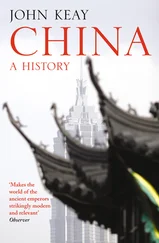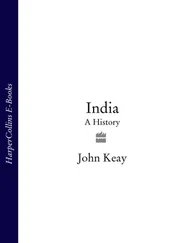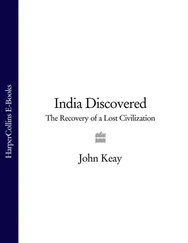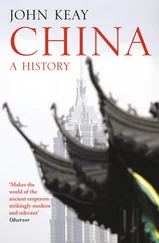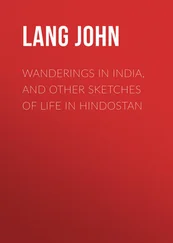This, however, is a simplistic explanation for the emergence of states, and would certainly not have encouraged the formation of monarchies. In brahmanic tradition kingship is said to have been pioneered by the gods. Facing defeat by their supernatural enemies, the gods put their heads together and decided to choose a leader; Indra got the job. A raja , in other words, should be chosen by his peers, his role was principally military, and his raj had the sanction of divine precedent. Other myths reformulated the concept. One, already noticed, promoted kingship as the only insurance against anarchy. In the evil times ushered in by the Kali Yug , men found themselves obliged to compete with one another for wealth, women and favour. Society was thus reduced to the free-for-all of matsya-nyaya (‘the law of the fishes’, i.e. of the jungle); and men were accordingly obliged to formulate rules of conduct and to seek a means of enforcing them. The gods, or Lord Vishnu in the shape of that rapidly growing fish, proposed a raja ; and they selected Manu. He agreed, but only on four nicely judged conditions – that he receive a tenth of his subjects’ harvest, one in every fifty of their cows, a quarter of all the merit they earned, and the pick of their choicest maidens. In other words, authority and law-enforcement were the now raja ’s main responsibilities; he was chosen by the gods rather than men; and under an advantageous reciprocal arrangement he had a right to a substantial contribution of the good things his subjects produced.
Here, then, was a firm ideological basis for kingship. But while the element of contract implicit in the Manu myth was much emphasised by Buddhist sources, brahmanic sources focused on the element of divine sanction. Either way, a monarch was theoretically subject to constraints, human or divine, and should not be regarded as an outright despot. Conversely, all theories of kingship provided ample justification for the administrative and coercive structures which would constitute a state system.
But as with the more spontaneous evolution of the gana-sanghas (republics), state-formation was prompted not simply by the appeal or logic of a particular constitution. Just as important were the challenges and opportunities created by new technologies and new social and economic conditions. It seems fairly certain from the abundance of artefacts unearthed by archaeology that, by mid-millennium, population densities had increased, and that migration had slowed as the more easily worked tracts became settled. The population increase owed as much to the incorporation, or Aryanisation, of indigenous peoples as to a soaring birth-rate amongst the immigrants; and both processes would heighten social awareness and caste/class distinctions.
On the other hand, agricultural production seems to have more than kept pace with the growing population. The use of heavy ploughs drawn by eight oxen or more, the widespread adoption of rice and the development of irrigation are all well attested by 500 BC: ‘Buddhist texts describe rice and its varieties with as much detail as the Rig Vedic hymns refer to cows.’ 10It has been suggested that the wetter soils of northern Bihar were so unsuitable for barley that only some understanding of wet rice-cultivation would have made them worth settling. The effort of clearing such lands and building embankments for water retention would still have been arduous; yet it paid off. By the sixth-fifth centuries BC the Lichhavi and other republics north of the Ganga would together represent a formidable power well capable of meeting a challenge from their monarchical neighbours, notably the Koshala/Kashi kingdom in the south-west and, south-east across the Ganga, the aggressive new dynasty of Magadha.
More intensive farming regimes also made for new attitudes towards the land. The grazier’s seasonal parameters had given way to the fixed dimensions of the ploughman’s field. Anchored to a dependable supply of water and labour, the grama grew into a village of mud-brick housing which was home both to families of clan descent and to a growing band of socially differentiated dependants and subordinates. From the village there now spread a quilt of carefully supervised plots within a network of ditchings. The common rights of ownership typical of a pastoral society were being edged out by local initiative and the use of subject labour. Quick to claim the fields which they had reclaimed, the grhpatis , or heads of households, pressed for title to land, labour and water as the best way to meet their obligation of supplying the livestock and, increasingly, the grain needed for the leadership’s ritual sacrifices. Imperceptibly terms like bali , which originally meant an offering intended for the clan-chief’s sacrificial disposal, came to denote a fixed and regular contribution which, when subject to record and assessment, duly became a tax. Similarly bhaga , originally a ‘share’ of the spoils of war exacted by the chief, came to signify a tax on produce, usually of one sixth.
As cultivable land came to be considered as familial property, so the wider but ill-defined janapada , the ancestral territory of a particular clan, assumed fixed boundaries. The Gangetic basin’s abundant rivers and riverbeds made convenient frontiers for the newer janapada in the east. Buddhist texts list sixteen maha-janapada , or major janapada , as having been extant in the sixth century BC. They extended from Gandhara and Kamboja in the north-west of what is now Pakistan to Avanti and Chedi in central India and Anga and Kalinga in Bengal and Orissa. Soon to be known as rashtra , or ‘kingdoms’, many still retained their tribal names; Kuru was still the land of the Kuru, and Malla of the Malla. But allegiance was now dictated less by the horizontal bonds of kinship and more by the vertical ties of economic and social dependency. Instead of being focused on tribe or clan, loyalty was increasingly to the territory itself, to the individual or body which had sovereignty over it, and to the town or city where that power resided.
India’s second urbanisation (the first being that of the long-forgotten Harappans) may be attributed partly to this process of state-formation and to the institutions it engendered, and partly to the surplus generated by the new agricultural regime pioneered in the east. The post-Vedic texts, of course, would have us believe that towns and cities had dotted the land for aeons. But it is only from C600 BC that archaeology lends any weight to their optimistic imagery. Earthen ramparts of about this period have been uncovered at Ujjain (in Malwa), Varanasi and Kaushambi (the post-Hastinapura capital of the Kuru, west of Allahabad). These ramparts have ‘civic dimensions and must have enclosed real cities’. 11Other sites like that of Sravasti, the post-Ayodhya capital of Koshala, and Rajgir, the Magadha capital, seem soon to have followed suit. In the west, Taxila and Charsadda may have preceded them; but that was under a different impetus if not a different dispensation. In the north-west, with stone plentiful, there is also evidence of monumental structures.
Nothing comparable is found in the city sites of the Gangetic basin; even kiln-fired brickwork, the Harappans’ speciality, does not reappear until the last centuries BC. Buildings, including state edifices and royal residences, were evidently of timber and mud. The first Buddhist stupas (commemorative mounds, often erected over relics of the Buddha) were of just such perishable materials, although it was precisely these sacred structures which would be amongst the earliest to be clad, then gloriously cloistered, in stone. Of architecture and sculpture, the signposts to so much of later Indian history, nothing remains.
Читать дальше



